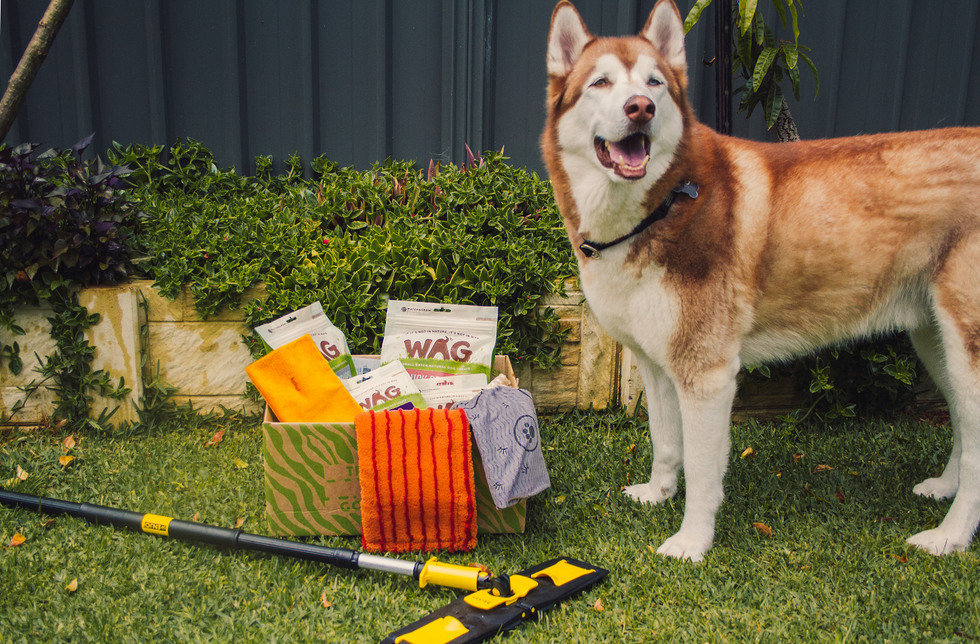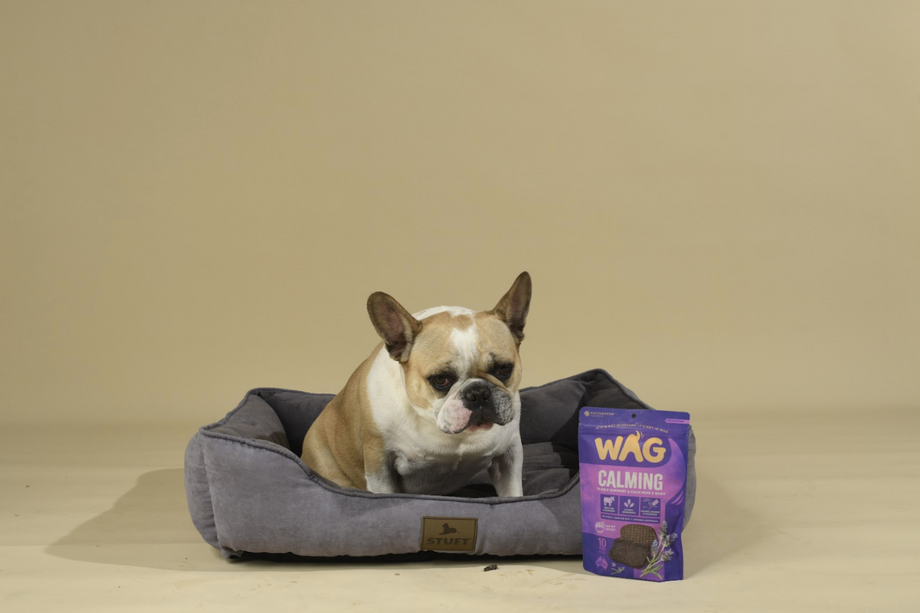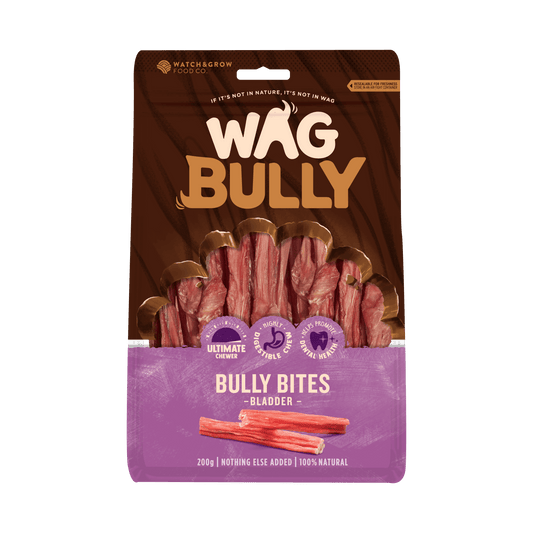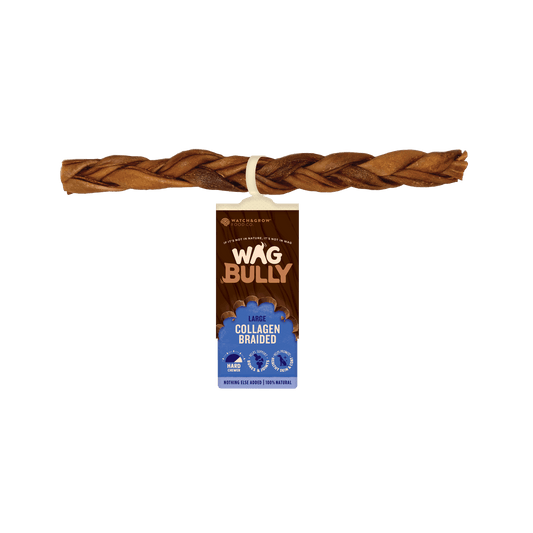Have you got a pooch that loves to sleep for what feels like all day? Or maybe you’re pals with a pup that just can’t stop, won’t stop, and will not settle for a nap. Then maybe it’s time to stop losing sleep about your dog’s sleep, and get some of your own!
In this blog, we talk about the sleep needs and sleeping habits of dogs at different stages of their lives, canine sleep cycles, and factors that determine the quality of a dog’s sleep. We will also offer you some tips on helping your furry friend get some deep, restful shuteye. Who knows, you might even pick up a tip or two that can help improve your own quality of sleep!
Sweet dreams are made of these - Do dogs need more sleep than people?
Types of Sleep
Whenever your cuddly companion drifts off to sleep at an inopportune time, there’s a good reason why. Dogs are polyphasic sleepy heads, which means that they can sleep wherever, whenever, and at different times throughout the day. On the other hand, most of us humans have adopted a monophasic sleeping style, which means that we sleep for a big chunk of uninterrupted time, usually for 6 to 9 hours a night.
REM & non-REM
Dogs need sleep to rest, grow, and learn. That new handshake you guys were working on today? You can bet that Buddy is practicing that over and over in his dreams. And if little Lacy is still a precious puppy, she’ll need to get as much sleep as she can to recover from all that growing. Active dogs need proper rest so their bodies can continue to repair and build muscle and tissue. For all this sleep magic to happen, dogs need to get restful sleep that stretches for the whole cycle.
Like people, dogs cycle between Rapid Eye Movement sleep cycles (REM for short) and non-REM sleep cycles. During non-REM, we experience deep sleep. After around 40 minutes since falling asleep, dogs’ sleep will shift into REM and they will start to dream. During REM, you will notice their breath get shorter and faster for about 6 minutes. Then, they switch between the two cycles throughout their sleep, with REM periods stretching for longer until they wake. Each sleep cycle where dogs go from non-REM to REM lasts for only 45 minutes each time.
Are you sleeping? - Sleep for dogs at different life stages
So really, how much sleep do dogs need? In general, sleeping takes up about 50% of a dog’s day. And just like us, the amount of sleep a dog needs will largely depend on the stage of life they are in. In general, puppies, sick pooches, senior dogs, and some larger breeds need more sleep than their other canine counterparts. To know exactly how much sleep your dog needs, you should follow their cues and talk to a vet or other animal expert for some trusted doggy sleep advice.
Puppies
Did you know that puppies need an average of 16 to 20 hours of sleep every day? Their little bodies and brains are constantly growing and taking in information about the world – and that’s hard work! Before a dog turns one year old, don’t be surprised to see them fall asleep in the middle of a game. On the flipside, some pups refuse to sleep during the day!
Adult dogs
You might notice that your fully grown dog tends to rest a lot throughout the day. If you break up their sleeping routine, you will see that 30% of their daytime napping is very light and they can easily be woken up. Proper sleep takes up about 50% of their days, with most deep and restful sleep done at night. This leaves 20% of the day for time to be running around, eating, playing, and spending time with you.
Senior dogs
Just like nana and gramps, senior dogs get tired easily and need to rest more often during the daytime. These naps help to recover some energy so that they can hang out with you during their waking hours.
Go to bed, sleepyhead - Factors that determine a dog’s sleep habits
Aside from your dog’s age, there are a couple of other factors that determine the frequency and quality of their sleep. A few simple changes to your furry friends’ lifestyle and routines can help them get deeper, more restful sleep at the right times of day.
Diet: A dog’s diet can be a tricky thing to navigate. The wrong diet can lead to them becoming lethargic, overweight or obese, hyperactive (not the same as being energy-rich), irritable, or less switched on. It's important to let dogs have an early dinner and some exercise afterwards so they have time to digest their food. In the case they are still hinting for food even after eating their meals, offer them a few of our healthy Australian made dog treats. In short, happy tummies = better Z’s.
Breed: Some breeds of dogs, especially giant ones, will need more sleep. This is likely because their bigger bodies need more metabolic energy to run. So let that sleeping dog lie!
Exercise: Dogs that get more exercise in their days will have deeper levels of sleep. And ironically, active pooches also spend less time lounging about in the day. So get walking, mate!
Environment: Furry friends that sleep indoors spend about 80% of the night asleep. For those pups that sleep outside, they average 60 to 70% of sleep per night. This is probably because there are fewer distractions, noises, and lights inside the house in comparison to outdoors in the evenings.
Sleep disorders: Some unlucky dogs can suffer from sleep problems that negatively affect their mood, behaviour, and health in the long term. Sleep apnea, hypothyroidism, and doggy dementia are common disorders that can be improved with professional attention.
Give the dog a bone
Just like people, dogs can thrive on a healthy routine. So setting a predictable schedule for sleeping, eating, and playing is really the answer to the question of how much sleep do dogs need. And best of all, helping your dog start or maintain a routine doesn’t have to be difficult.
You can start with the smallest changes like getting outdoors more often, giving them more comfortable bedding, moving their doggy bed to a cozier spot in the house, and giving them natural dog treats that contain no additives or grains.
And we gotta say, our delicious bully sticks are perfect for chops who just have to chomp. And if you know someone who’s just become a dog parent, you can’t go wrong with a WAG puppy pack. After all, you are what you eat!
Shop the Recipe
Noopur Powale
Up Next
5 WAYS TO MAKE YOUR HOUSE CHRISTMAS READY FOR YOUR DOGGO!





